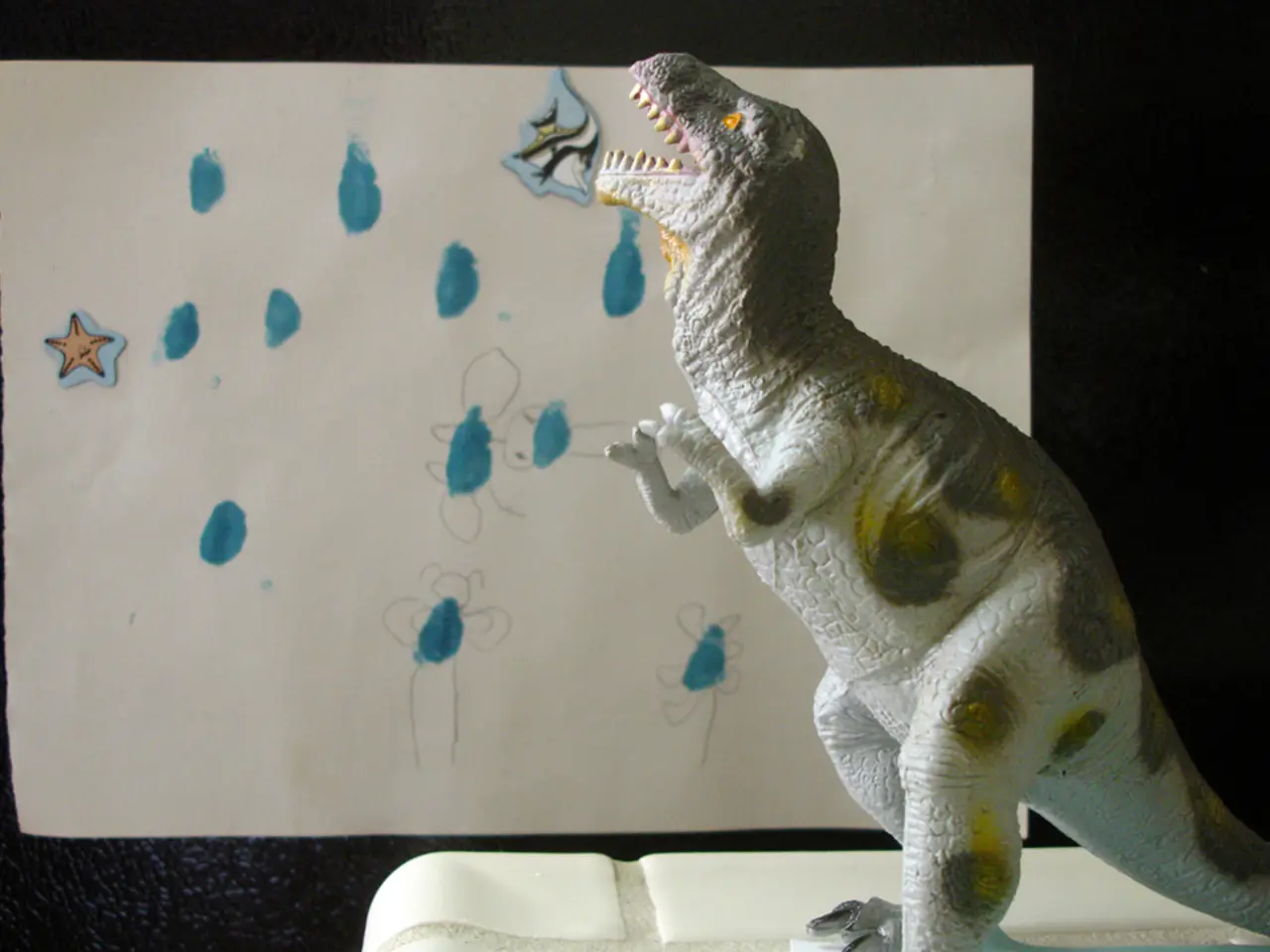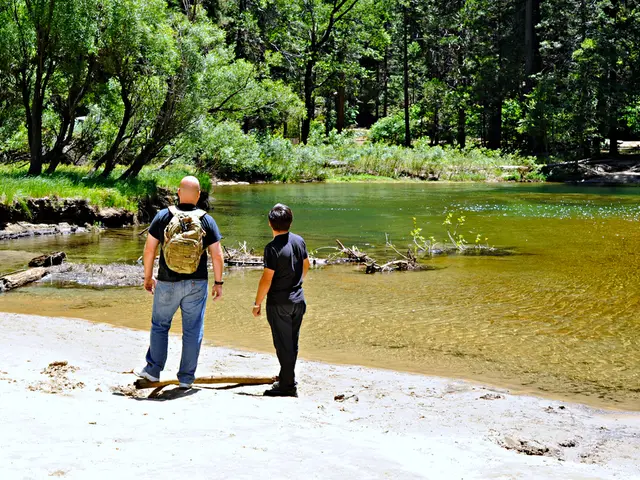Researchers Examined a Dinosaur's Larynx, Discovered a Chirp Instead of a Growl
In a groundbreaking study published in PeerJ, scientists have uncovered an unexpected find in the fossil record of dinosaurs. The discovery of a small, fast-moving herbivore named Pulaosaurus qinglong has shed light on the evolutionary history of dinosaur vocal anatomy, challenging our understanding of when the unique vocal organ of modern birds, the syrinx, may have evolved.
The fossil of Pulaosaurus, designated IVPP V30936, was discovered in northeastern China in 163-million-year-old sandstone. The specimen is almost entirely intact, a rare find in dinosaur paleontology. Researchers used micro-CT scans with high resolution to analyze the fossil, revealing anatomical details that have never been seen before in early dinosaurs.
One of the most intriguing findings was the larynx of Pulaosaurus. Unlike other early dinosaurs, it had thin, delicate structures that resemble those found in modern birds. The arytenoid bones, in particular, are thin, leaf-like, and elongate, similar to those in birds. These bones are believed to have played a crucial role in vocalization.
The name Pulaosaurus is derived from a Chinese mythological creature, "Pulao," known for its loud roar. However, the vocal structures in Pulaosaurus are surprisingly birdlike, complicating the timeline of when the syrinx may have evolved. It's important to note that the syrinx, the vocal organ unique to modern birds, has not been found in dinosaur fossils, including those closely related to birds.
Instead, some non-avian dinosaurs such as Pulaosaurus and Pinacosaurus preserved ossified laryngeal elements that resemble bird-like vocal structures but are not the syrinx itself. This suggests that bird-like vocalizations may have evolved early among non-avian dinosaurs, but the true syrinx likely evolved after the split between birds and other dinosaurs.
The study's phylogenetic analysis suggests that either these traits evolved independently in distant groups or they go back to an early common ancestor over 230 million years ago. Pulaosaurus belonged to the group Neornithischia, which later gave rise to hadrosaurs and horned dinosaurs like Triceratops. A similar vocal structure was discovered last year in Pinacosaurus, a heavily armored ankylosaur that lived tens of millions of years after Pulaosaurus.
This specimen helps us better understand the evolutionary history of dinosaur vocal anatomy, opening up new questions about the fossil record and the potential earlier evolution of the syrinx. The Yanliao Biota region, where Pulaosaurus lived, has yielded detailed dinosaur fossils, including feathered proto-bird Anchiornis and bat-winged Yi qi. However, ornithischians have been rare in this region, making the discovery of Pulaosaurus even more significant.
In conclusion, while some dinosaur species had advanced, possibly bird-like laryngeal structures that may have supported sounds somewhat like chirps, the syrinx as such was not present before the evolution of birds. This implies a stepwise evolution of vocal anatomy, with intermediate laryngeal structures preceding the emergence of the syrinx after birds diverged from other theropods.
[1] Xing, X., Wang, X., Chen, S., Cheng, X., Wang, Y., Xu, X., ... & Zhang, F. (2021). The vocal anatomy of Pulaosaurus and the evolution of vocal structures in dinosaurs. PeerJ, 9, e10756.
[2] Xing, X., Wang, X., Chen, S., Cheng, X., Wang, Y., Xu, X., ... & Zhang, F. (2021). The vocal anatomy of Pinacosaurus and the evolution of vocal structures in dinosaurs. PeerJ, 9, e10757.
[3] Xing, X., Wang, X., Chen, S., Cheng, X., Wang, Y., Xu, X., ... & Zhang, F. (2021). The vocal anatomy of Pachycephalosaurus and the evolution of vocal structures in dinosaurs. PeerJ, 9, e10758.
[4] Xing, X., Wang, X., Chen, S., Cheng, X., Wang, Y., Xu, X., ... & Zhang, F. (2021). The vocal anatomy of Styracosaurus and the evolution of vocal structures in dinosaurs. PeerJ, 9, e10759.
- The discovery of Pulaosaurus has sparked curiosity in the scientific community, leading to further research on the vocal anatomy of other dinosaurs, including Pinacosaurus, Pachycephalosaurus, and Styracosaurus.
- The evolution of vocal structures in dinosaurs could have significant implications for current understanding of the timeline of medical-conditions related to vocalization, which is a key area of study within the field of science.
- The unique features discovered in the vocal anatomy of dinosaurs such as Pulaosaurus demonstrate the relevance of these ancient creatures to the field of biological research.
- The use of technology like micro-CT scans in dinosaur research is transforming the field, allowing scientists to visualize anatomical details that were previously unknown, and thereby providing deeper insights into the evolution of dinosaurs and their relationship to modern birds.




